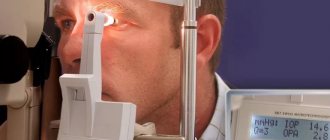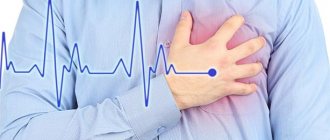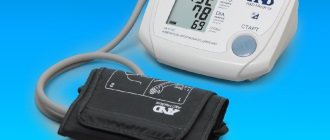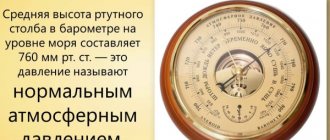Age-related changes in the human body are irreversible. We cannot turn back time, but we can control our own health and take measures to stabilize our well-being. One of the most important factors indicating health problems is blood pressure. They are influenced by: the general condition of the body, psycho-emotional factors, hormonal changes and, of course, the number of years lived. What is the normal blood pressure for a person by age, and what to do if the values on the tonometer are far from ideal?
How to measure blood pressure correctly?
Sometimes errors in pressure readings may be associated with improper use of a semi-automatic or automatic tonometer, most often used at home. It is important not only to check the functionality of the device, for example, the battery charge, but also to adhere to a number of simple rules, among which the following can be noted:
- You should not smoke before taking measurements. Of course, smoking, in principle, cannot be called a healthy habit, but if you smoke, try to give up cigarettes at least half an hour before the diagnostic procedure.
- Physical activity 30–60 minutes before measuring blood pressure (blood pressure) in an adult or child is also excluded. It is necessary to rest and relax, otherwise the indicators of the device will be inaccurate and can be misleading with sharply increased and decreased values.
- You should not eat shortly before measurement. Some foods can themselves raise blood pressure for a short time. A hearty dinner forces the body to work harder, which cannot but affect the results.
- Blood pressure should be measured in a sitting position, sitting on a chair with good back support. The hand should be at chest level (on the table). You cannot talk or gesture while the tonometer is working.
- For a more accurate measurement, it is necessary to measure blood pressure on one arm, and after 10 minutes - on the other. The lowest result will be accurate.
Advice! For both hypertension and hypotension, it will be useful to keep a journal in which data on blood pressure values and the time of measurements will be recorded.
Upper or systolic is the pressure at the moment when the heart muscle is at maximum tension, pushing blood into the arteries. Lower, or diastolic pressure at the time of diastole (rest). When making a diagnosis, not only the values themselves are taken into account, but also the difference between the upper and lower pressure, which normally does not exceed 20–40 mmHg. Art.
It is also important to take your heart rate into account. An increased or decreased pulse against a background of normal blood pressure may indicate a number of pathologies that require additional examination and treatment.
from May 14 to 24 as part of the Year of the Heart at the City Hospital No. 1
them. G.I. Drobyshev hosts an informational and practical campaign
“Learn to control your blood pressure.”
One of the most common health complaints and one of the most “favorite” diseases among older people is increased blood pressure. This pathology can explain any changes in well-being, bad mood and other troubles. Blood pressure can rise and fall several times during one day, and a person’s normal blood pressure is a purely individual concept.
What is blood pressure and what indicators are considered normal?
Blood pressure is a general concept that determines the force with which blood presses on the walls of blood vessels; it would be more correct to call it blood pressure, because pressure matters not only in the arteries, but also in the veins and capillaries. But it is only possible to measure pressure in large vessels located on the surface of the body—in the arteries—without the help of special instruments.
Blood pressure - blood pressure - depends on the speed and force with which a person’s heart contracts, how much blood it can pump in one minute, on the properties of the blood itself and the resistance of the walls of blood vessels.
Factors influencing blood pressure:
- the ability of the heart to contract with sufficient force and ensure normal release of blood through the vessels;
- from the rheological properties of the blood - the “thicker” the blood, the more difficult it is to move through the vessels; diseases such as diabetes mellitus, increased coagulability, greatly impede the flow of blood and can lead to problems with blood pressure; with thick blood, some doctors prescribe treatment with leeches;
- elasticity of the walls of blood vessels - blood vessels wear out over time and cannot withstand increased load - this becomes the cause of the development of hypertension in older people,
- atherosclerotic changes - reduce the elasticity of the walls;
- sharp narrowing or dilation of blood vessels - as a result of nervous shocks or hormonal changes, a sharp narrowing or dilation of blood vessels is possible - for example, with fear, anger or other strong emotions;
- diseases of the endocrine glands.
Normal blood pressure is determined by a combination of a large number of parameters, and for each age, gender and for an individual person, its indicators can vary greatly. Medical standards are taken as average values from healthy people of a certain age. It has long been proven that blood pressure of 120/80 cannot and should not be considered the ideal norm for people of different ages.
To find out what normal blood pressure a person should have at different age periods, you can use the following table.
Blood pressure indicators for an adult:
- Normal blood pressure is considered to be between 110\70 and 130\85 mm. rt. Art.
- Low normal pressure – 110\70 – 100\60;
- Low blood pressure – hypotension – below 100\60;
- Increased normal pressure – 130\85-139\89;
- High blood pressure - hypertension - more than 140\90 mm. rt. Art.
Indicators of normal blood pressure for different age periods:
- 16 – 20 years – 100\70 – 120\80 mm. rt. Art.
- 20 – 40 years – 120\70-130\80;
- 40 -60 – up to 140\90;
- over 60 years old – up to 150\90 mm. rt. Art.
From the table above, it is clear that the older a person is, the higher the normal blood pressure indicators; this is due to age-related changes in blood vessels, in the heart muscle and in other organs. High blood pressure, like low blood pressure, can cause various health problems, but in order to determine whether changes in blood pressure are to blame for poor health, you need to measure it regularly and keep a special diary. For this, several trips to the clinic or visits to the doctor are not enough; only daily regular blood pressure measurements can give correct results.
Measurement.
The correct diagnosis and prescription of treatment largely depends on the correct measurement of blood pressure, because the doctor, when prescribing medicine or prescribing treatment, is largely guided by the measurement numbers.
Today there are different ways to measure pressure:
- The simplest and oldest - using a cuff and a tonometer - here it is of great importance to correctly apply the cuff, the ability to use a tonometer and listen to heart sounds. This measurement requires special training and skills, but when used correctly, it gives fairly accurate and reliable results.
- Electrotonometer - the operating principle is the same, but the results are visible on a special display. This makes it easier to measure your blood pressure yourself and provides more accurate results. But such blood pressure monitors often break down and may show incorrect numbers.
Regardless of the method used to measure blood pressure, several general rules must be followed:
- before the measurement, half an hour before the start, avoid physical activity, nervous tension, smoking, eating, and so on,
- relax, sit comfortably when measuring,
- the posture should be comfortable, the back should be straight, there must be support, the hand should rest freely at the level of the patient’s chest,
- you cannot talk or move during the measurement,
- The measurement should be carried out on both hands and it is advisable to carry out a series of measurements with an interval of 5-10 minutes.
If, after correctly measuring blood pressure, the readings are very different from the norm, you need to repeat the measurements within a few days and, if confirmed, consult a doctor.
High blood pressure.
Considered one of the most dangerous diseases of mankind, hypertension affects about 25% of people worldwide, and this figure continues to increase. Hypertension is an increase in blood pressure above 140/90 mmHg. rt. Art. Causes of hypertension can be:
- overweight,
- genetic predisposition,
- diseases of internal organs,
- lack of physical activity,
- smoking and drinking alcohol,
- excessive consumption of table salt,
- nervous tension,
- other factors.
With hypertension, the patient suffers from headaches (and here pills for headaches will not help), shortness of breath, heart pain, increased fatigue, insomnia, poor health and other symptoms. In addition, the risk of developing cardiovascular diseases, brain damage, pathology of the urinary system and eye diseases increases.
Treatment of hypertension is a very complex and time-consuming process, where the outcome of the disease depends on compliance with the doctor’s recommendations. It is important to find the cause of the increase in pressure and act on it. At the same time providing symptomatic treatment. In each specific case, medications, doses and their combinations must be selected individually by the attending physician.
Without timely treatment or uncontrolled use of medications, hypertension can not only seriously damage health, but also cause a life-threatening condition such as hypertensive crisis.
Hypertensive crisis.
Hypertensive crisis is a life-threatening condition caused by a sharp increase in blood pressure and damage to the nervous system and target organs. Blood pressure figures during a hypertensive crisis can vary greatly in different patients - some people normally tolerate 200\150 mm. rt. st, and for some people feel bad already at 150\85 mm. rt. Art. The nature of the lesions in GC depends on which organs previously had the pathology - if the heart hurts, myocardial infarction may occur, if you suffer from headaches, then a stroke, and so on.
The causes of GC may be:
- psycho-emotional stress,
- exercise stress,
- meteorological changes,
- drinking alcohol,
- rich foods high in salt,
- incorrectly selected antihypertensive drugs,
- diseases of the endocrine system and internal organs.
With the development of GC, the patient’s well-being sharply worsens, a feeling of fear and anxiety arises, nausea, vomiting, darkness before the eyes, swelling and flushing of the face, chills, tremors of the limbs, fainting, and even coma may appear.
If such symptoms appear, you need to lay the patient on any flat surface with the head of the bed raised and immediately call an ambulance. Before her arrival, try to provide the patient with peace, an influx of fresh air, and get rid of restrictive clothing. If the patient has had hypertension for a long time, then, most likely, he is taking some kind of antihypertensive drug, in this case, before the doctor arrives, you can give the patient the usual dosage.
Hypotension, low blood pressure.
For many people, especially those suffering from hypertension, it seems that lowering blood pressure cannot be a problem, but in fact this is not the case. Constantly low blood pressure can cause no less inconvenience and health problems than hypertension.
The causes of this pathology can be hereditary predisposition, poor nutrition and vitamin deficiency, endocrine diseases, nervous strain, general exhaustion of the body and other problems.
A person suffering from hypotension constantly feels tired, overwhelmed, has difficulty performing daily duties and is emotionally inhibited. In addition, there is a decrease in memory and brain activity, poor thermoregulation, increased sweating, headaches, drowsiness, pain in the joints and muscles, and a general feeling of poor health.
Although, unlike hypertension, hypotension does not cause serious health problems, it also requires treatment. Only a doctor can determine the cause of hypotension and prescribe treatment after a detailed examination. And without medical help, we can advise you to establish a work and rest schedule, eat well, not be nervous and give up bad habits.
Original article https://tibet-medicine.ru/sovrmed/normalnoe-davlenie-cheloveka
Blood pressure standards for children and adolescents
In newborn children, the vessels are elastic and soft. That is why the blood pressure in children is always reduced. Blood simply does not have to make any effort to be transported throughout the body. With age, under the influence of internal and external factors, the picture changes. The vessels become stiffer, the pressure is higher.
Blood pressure table for children and adolescents
If in the first weeks of life the normal pressure is 80 to 40 mm Hg. Art. with a heart rate of 140 beats per minute, then by the age of one year the values increase to 100 per 60 mm Hg. Art., and the pulse rate decreases to 132. In adolescence, blood pressure levels are not much lower than in adults, however, hormonal changes during puberty can lead to an increase in systolic and diastolic pressure or a decrease in the range of 15–20 mm Hg. Art. from the norm. Such fluctuations are not traditionally treated by adjusting the daily routine and diet. Blood pressure returns to normal by the age of 16. The heart rate of a teenager from 12 to 16 years old is 75 beats per minute.
Why does blood pressure increase with age?
The physiological process of a gradual increase in blood pressure is a normal course of life. It is associated with an inevitable decrease in the elasticity of blood vessels and hormonal changes, which manifest themselves most clearly in the female body. During menopause, the amount of estrogens, hormones that have a vasodilating effect, decreases. In response to this, vasoconstrictor reactions increase, leading to an increase in blood pressure. If a person has had hypotension throughout his life, it is more difficult for him to adapt to high blood pressure, since there are no compensatory reactions that a normosthenic person develops throughout his life.
What numbers are normal for an adult?
Adult standards also change over time. The ideal value is 120/80 mmHg. Art., in fact, is a reference only for young people leading a healthy lifestyle. And what is the norm for 30 years old is irrelevant for a person at 70–80 years old.
Normal blood pressure and pulse rates by age for women and men:
| Age | Women, mmHg Art. | Men, mmHg Art. |
| 20 years | 116/72 | 123/76 |
| from 21 to 30 years old | 120/75 | 126/79 |
| from 31 to 40 years old | 127/80 | 129/81 |
| from 41 to 50 years | 137/84 | 135/83 |
| from 51 to 60 years old | 144/85 | 142/85 |
| 70 years and older | 159/85 | 142/80 |
The average heart rate for adults is 60–80 beats per minute. However, this indicator, like blood pressure, is influenced by external and internal factors: diseases, stress, excess weight, bad habits, weather, etc. There are also age standards. For a forty-year-old person, the heart rate is 80 beats per minute, which is the norm, and for a 70-year-old, the normal pulse is 90. It is important to pay attention not only to the number, but also to the rhythm of the pulsating beats.
Myth 2. If you feel well, there is no high blood pressure.
Exposure. Despite the fact that a rise in pressure is sometimes accompanied by symptoms - headache, the appearance of veils or spots before the eyes, loss of consciousness, shortness of breath, dizziness, chest pain, rapid pulse, nosebleeds - this is not always the case. For many, this happens completely imperceptibly - this is why hypertension is called the silent killer. Therefore, regularly measuring blood pressure (preferably at the same time every day) should be the same natural rule as brushing your teeth. Even if you feel excellent, if the tonometer detects pathological changes in pressure, you should immediately consult a doctor. Well, if obvious symptoms appear, you need to measure your blood pressure immediately.
Article on the topic
Stroke protection. What to do in case of pressure surges
What are the reasons for fluctuations in blood pressure and heart rate?
The reasons for an increase or decrease in a person’s heart rate and blood pressure may be physiological. For example, associated with hypothermia, dehydration or living in high mountains, stress, and a sedentary lifestyle. Women especially often experience changes for physiological reasons. Fluctuations in blood pressure are considered normal not only during pregnancy or menopause, but also during menstruation. According to statistics, on the first day of menstruation, blood pressure decreases by 10 mmHg. Art. from the norm for age.
The blood pressure of a 9 year old child is normal
If deviations in blood pressure and pulse pressure differ significantly from the norm, you should contact a specialist (pediatrician, therapist or cardiologist), who will prescribe an additional examination that can explain why this problem arose. The reasons may be the following:
- disruption of the heart, which does not allow the organ to work with the necessary force;
- changes in blood composition caused by endocrine and autoimmune pathologies;
- atherosclerosis, in which cholesterol plaques form on the walls of blood vessels;
- a decrease in the elasticity of blood vessels or a decrease in the lumens in them, associated with age, hormonal processes in the body, taking medications, intense physical activity, and nutritional disorders.
The risk of hypertension increases in overweight people
What is optimal blood pressure?
Many patients are concerned about the question of what optimal pressure is and how to determine it correctly.
A person experiences surges in blood pressure throughout the day; it is not constant. There is a decrease at night, during periods of deep sleep, and an increase when waking up and doing household chores. And that's absolutely normal. It is caused primarily by physiological processes occurring in the body. The meaning may change after eating, taking a bath or shower, during stressful, negative situations.
Functional system that maintains optimal blood pressure levels
Optimal blood pressure is the one at which a person feels good. It may not meet established standards, be higher or lower than recommended limits. Thus, the concept of an optimal level means a possible range of changes, the average value of indicators during the day.
Memo for measuring blood pressure
The best way to determine your optimal blood pressure level is to measure it throughout the day. It is necessary on both hands several times a day .
This should be done half an hour after a meal, bath or shower, or physical activity. You need to take a comfortable, relaxed position and follow the measurement instructions for a specific tonometer.
Based on the obtained values, determine the average values of the lower and upper limits. To do this, you need to add the resulting values and divide by the number of measurements.
Eg:
- The numbers received were 120/80, 110/90, 115/75.
- The upper limit is 120+110+115 and divided by three. That turns out to be 115.
- The lower limit is 80+90+75 and divided by three. That turns out to be 82.
- This means that the optimal arterial indicator is 115/82.
These calculations are approximate , but they allow you to keep your health and well-being under control.
Recommended viewing:
Characteristic symptoms of hypertension and hypotension
At the first stage of hypertension, pressure surges up to 159/99 mm Hg occur. Art. Most often, malaise occurs after severe overwork or stress. Patients note an increase in heart rate and headaches, weakness, and increased nervous excitability.
At the second stage, the following symptoms include: deterioration of sleep, nosebleeds, pain in the heart, severe headaches. Blood pressure rises to 160–170/100–109 mmHg. Art.
The third stage of hypertension is a serious disease that irreversibly affects the entire human body. This stage is characterized by cardiac dysfunction, chronic renal and heart failure, heart attack, and angina.
Important! If at the first stage the patient’s condition can be corrected and the disease goes away almost without a trace, but stages 2 and 3 of hypertension are practically not curable. The goal of the doctor and his patient is to monitor the condition and regularly take antihypertensive drugs that can stabilize the patient’s well-being for some time.
Low blood pressure manifests itself differently. A person suffers from headaches, which are localized in the temporal region, loss of strength, drowsiness, dizziness, nausea, and fainting. Symptoms worsen during weather changes, magnetic storms, and during acclimatization.
Both hypertension and hypotension require treatment. What it will be like and how long it will last depends on the patient’s health condition. It is necessary to strictly adhere to the treatment regimen drawn up by the doctor, without independently increasing or decreasing the dosage of drugs.
Treatment
High diastolic pressure can be reduced by eliminating the cause of the disorder. To do this, you should undergo an examination (blood test, ECG, x-ray), which will determine the causes of the condition. It is important to adhere to the treatment regimen drawn up by your attending physician, taking all prescribed medications and constantly monitoring your well-being using a home blood pressure monitor. Help to lower regularly rising blood pressure:
- ACE inhibitors;
- diuretics;
- calcium antagonists;
- alpha blockers;
- beta blockers;
- angiotensin 2 antagonists.
Blood pressure-lowering drugs are selected by a doctor, as they have a large list of contraindications and side effects that must be taken into account when drawing up a treatment regimen. An integrated approach will allow you to increase the effectiveness of therapy: taking medications, correcting your diet, giving up bad habits, and traditional medicine recipes.
Tablets and other potent medications are practically not used in the treatment of low blood pressure. To correct the condition, the disease that led to it is treated. If no deviations in the functioning of the body are found, then doctors recommend using folk remedies. These are healing herbal decoctions, tinctures of ginseng root and eleutherococcus. Treatment is long-term – at least 40 days. Raising your blood pressure to normal levels, you should regularly monitor your condition by visiting a doctor and measuring blood pressure at home.
Prevention measures
Age factors cannot be eliminated. However, a person of any age can delay the onset of cardiovascular diseases. To do this, you should adhere to certain rules, which should not be temporary, but permanent, even for a completely healthy person.
- Smoking and alcohol abuse are the main enemies of the heart and blood vessels. By getting rid of bad habits, you can protect yourself for a long time from problems with changes in blood pressure and their consequences.
- No matter how busy your work schedule is, make time for physical activity. If it is not possible to go to the gym, walking in the fresh air and morning exercises can be an alternative.
- In both adults and children, problems with blood pressure can be associated with stress and overwork, which occur in people of any gender and occupation. It is important not only to study and work fruitfully, but also to fully relax. Night rest is especially valuable, so you should refrain from working at night.
- Pay attention to weight. Every extra kilogram increases the load on the heart and blood vessels, which cannot but affect blood pressure. A balanced diet and regular physical activity will not only improve your figure, but also protect against changes in blood pressure.
- The condition of the heart and blood vessels largely depends on what food predominates in your diet. Eating disorders can lead to the formation of cholesterol plaques - the first step to hypertension. The menu should consist of lean meat, sea fish, cereals, whole grain bread, fruits, vegetables, and vegetable oils.
Important! Treatment of diseases - chronic and acute - must be timely. Regular visits to doctors will allow you to prolong your youth and avoid many problems with both blood pressure and the functioning of internal organs and systems.











